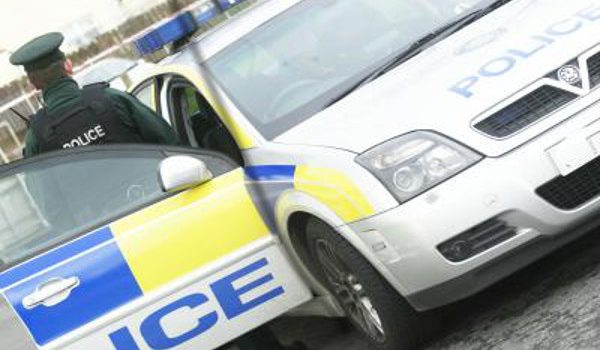
The Road Safety Authority has issued a ‘Road Safety Alert’, following a level orange weather warning forecasting very cold, wintry conditions for county Donegal.
Met Eireann is forecasting falls of snow, possibly from early tonight with wintry showers of sleet and snow expected tomorrow away from coastal areas.
The warning in full –
Road Safety Alert – Snow, sleet and hail
The Road Safety Authority (RSA) has issued a ‘Road Safety Alert’ today Monday 10th February 2014, following a level orange weather warning forecasting very cold, wintry conditions for county Donegal. Forecasting falls of snow possibly from early tonight before turning to rain, but likely to persist as snow. Rain will clear during the night and wintry showers of sleet and snow will appear overnight .
The Road Safety Authority (RSA) has, the following advice for motorists driving in snow and sleet. They are;
Get a grip. Remember your only contact with the road surface is your tyres so it’s vital that they are up to the task in icy and snowy conditions. Check tyres, including spare wheel, and replace them if the tread depth falls below 3mm. Check that tyres are inflated to the correct tyre pressure. Lack of grip can occur even on treated roads so drive slowly in the highest gear possible, manoeuvre gently and avoid harsh braking. Replace tyres if necessary.
Make sure you can see. Clear your windows and mirrors before you set out. Remember too that heavy snowfall will reduce visibility! Watch out for grit/salt spreaders and snow ploughs. The glare from the sun can be dazzling in the winter when the sun is low in the sky, so wear sunglasses in these conditions.
Check & use your lights. Use your dipped headlights so that others will see you. Make sure your headlights and taillights are all in working order, replace broken bulbs. Make sure lights are clear of snow.
Gently does it. Manoeuvre gently, slow down and leave extra distance between you and the vehicle in front. Too much steering is bad and avoid harsh braking and acceleration. Use the highest gear possible to avoid wheel spin. Select a low gear when travelling downhill especially if through bends. Falling snow, fog, rain, or hail will reduces visibility. Do not hang on to the tail lights of the vehicle in front of you as it can give a false sense of security. When you slow down, use your brakes so that the brake lights warn drivers behind you.
Give yourself a brake. If you get into a skid, you need to know if your vehicle has ABS (Anti- Lock Braking Systems). After you “Step” on the brake the ABS begins cycling — you will feel pulses in the pedal or hear the system working. It’s easy to properly use antilock brakes: Remember – Step, Stay and Steer. Step on the pedal. Stay on the pedal. Steer around the obstacle. (A warning: A little bit of steering goes a very long way in an emergency).
For vehicle’s without ABS, you’ll have to rely on the old-fashioned ‘Cadence Braking’ system: Push the brake pedal until the wheels stop rolling, then immediately release the brake enough to allow the wheels to begin turning again. Repeat this sequence rapidly. Your goal is to have the tyres producing maximum grip regardless of whether the surface is snow or ice.
How does your vehicle help? Check in your owner’s manual and find out if your vehicle has any safety assist technology like Electronic Stability Control (ESC) or Anti-Lock Braking System (ABS) and know how they assist your driving in severe weather conditions. But remember technology offers no miracles. Don’t let these lull you into overestimating the available traction.
Be Prepared! In prolonged icy or snowy driving conditions it is advisable to carry the following in the boot of the car:
- High Visibility Vest
- Tow rope
- Spare bulbs
- Spare fuel
- A shovel
- Appropriate footwear in case you have to leave your vehicle ie boots
- A hazard warning triangle
- Spare wheel (with tyre at correct pressure and tread)
- De-icing equipment (Both for glass and door locks)
- First aid kit (in good order)
- A fire extinguisher (fully operative)
- A working torch
- A car blanket, additional clothing & some food and water
Advice for Pedestrians & Cyclists ;
While walking on footpaths and in public places, or entering and exiting your car or truck, DO NOT underestimate the dangers of snow and ice.
Each winter slips and fall accidents cause serious injuries. Even when surfaces do not look especially icy or slippery, it is very possible that a thin sheet of transparent ice or “Black Ice” is covering your pathway putting you at risk. When you approach a footpath or roadway that appears to be covered with ice or snow, always use extreme caution.
Many slips and falls happen in places people regard as safe and secure, typically outside their front door, on the door step, on the path or while getting out of the car.
If you are out walking in snow or icy conditions wear appropriate footwear, don’t walk with your hands in your pockets, walk with your hands out and wear gloves so you can break your fall if you do slip.
Visibility is reduced in snowy conditions so wear high visibility clothing or carry a torch and if you cycle make sure your bike is fitted with lights front and rear.
Please visit our Severe Weather Advice page






